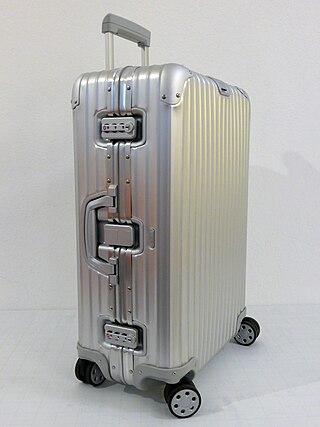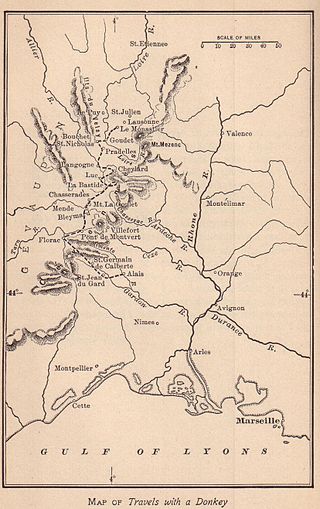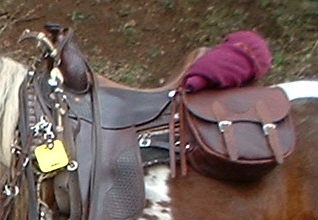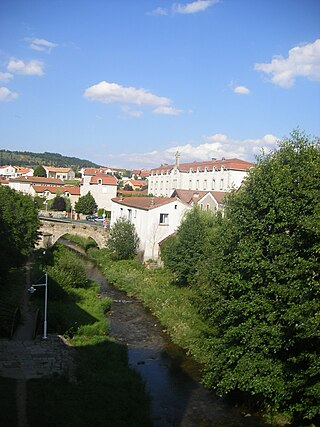
A carpet is a textile floor covering typically consisting of an upper layer of pile attached to a backing. The pile was traditionally made from wool, but since the 20th century synthetic fibers such as polypropylene, nylon, or polyester have often been used, as these fibers are less expensive than wool. The pile usually consists of twisted tufts that are typically heat-treated to maintain their structure. The term carpet is often used in a similar context to the term rug, but rugs are typically considered to be smaller than a room and not attached to the floor.

A Persian carpet or Persian rug, also known as Iranian carpet, is a heavy textile made for a wide variety of utilitarian and symbolic purposes and produced in Iran, for home use, local sale, and export. Carpet weaving is an essential part of Persian culture and Iranian art. Within the group of Oriental rugs produced by the countries of the "rug belt", the Persian carpet stands out by the variety and elaborateness of its manifold designs.

Baggage or luggage consists of bags, cases, and containers which hold a traveler's personal articles while the traveler is in transit. A modern traveler can be expected to have packages containing clothing, toiletries, small possessions, trip necessities. On the return trip, travelers may have souvenirs and gifts. For some people, luggage and the style thereof is representative of the owner's wealth and status. Luggage is constructed to protect the items during travel either with a hard shell or a durable soft material. Luggage often has internal subdivisions or sections to aid in securing items. Handles are typically provided to facilitate carrying, and some luggage may have wheels and/or telescoping handles or leashes to make moving them easier.

A handbag, commonly known as a purse in North American English, is a handled medium-to-large bag used to carry personal items. It has also been called a pocketbook in parts of the U.S.

Hessian, burlap in the United States and Canada, or crocus in Jamaica and the wider Caribbean, is a woven fabric made of vegetable fibres, usually the skin of the jute plant or sisal leaves. It is generally used for duties of rough handling, such as making sacks employed to ship farm products and to act as covers for sandbags, and for wrapping tree-root balls. However, this dense woven fabric, historically coarse, more recently is being produced in a refined state, known simply as jute, as an eco-friendly material for bags, rugs, and other products.

Uşak carpets, Ushak carpets or Oushak Carpets are Turkish carpets that use a particular family of designs, called by convention after the city of Uşak, Turkey – one of the larger towns in Western Anatolia, which was a major center of rug production from the early days of the Ottoman Empire, into the early 20th century.

Outdoor literature is a literature genre about or involving the outdoors. Outdoor literature encompasses several different subgenres including exploration literature, adventure literature, mountain literature and nature writing. Another subgenre is the guide book, an early example of which was Thomas West's guide to the Lake District published in 1778. The genres can include activities such as exploration, survival, sailing, hiking, mountaineering, whitewater boating, geocaching or kayaking, or writing about nature and the environment. Travel literature is similar to outdoor literature but differs in that it does not always deal with the out-of-doors, but there is a considerable overlap between these genres, in particular with regard to long journeys.
An oriental rug is a heavy textile made for a wide variety of utilitarian and symbolic purposes and produced in "Oriental countries" for home use, local sale, and export.

Saddlebags are bags that are attached to saddles.

Langogne is a commune in the Lozère department in southern France.

A khorjin is a type of decorative carpet bag made across Greater Iran and Central Asia.

Anatolian rug is a term of convenience, commonly used today to denote rugs and carpets woven in Anatolia and its adjacent regions. Geographically, its area of production can be compared to the territories which were historically dominated by the Ottoman Empire. It denotes a knotted, pile-woven floor or wall covering which is produced for home use, local sale, and export. Together with the flat-woven kilim, Anatolian rugs represent an essential part of the regional culture, which is officially understood as the Culture of Turkey today, and derives from the ethnic, religious and cultural pluralism of one of the most ancient centres of human civilisation.

A Gladstone bag is a small portmanteau suitcase built over a rigid frame, which can separate into two equal sections. Gladstones are typically made of stiff leather and often belted with lanyards. The bags are named after William Gladstone (1809–1898), the four-time Prime Minister of the United Kingdom.

Longchamp is a French leather goods company, founded in Paris in 1948 by Jean Cassegrain. The company pioneered luxury leather-covered pipes before expanding into small leather goods. Longchamp debuted women's handbags in 1971, becoming one of France's leading leather goods makers. Today, the company designs and manufactures leather and canvas handbags, luggage, shoes, travel items, fashion accessories, and women's ready-to-wear. The house is privately owned and managed by the Cassegrain founding family and does business in 80 countries through around 1,500 retail outlets.

Soumak is a tapestry technique of weaving sturdy, decorative fabrics used for carpets, rugs, domestic bags and bedding, with soumak fabrics used for bedding known as soumak mafrash.
The Dilmaghani family, the oldest existing manufacturers of hand knotted carpets and oriental rugs, can be traced back to the 1850s Qajar dynasty, Persia. In an industry which largely produces untitled items often identifiable only by experts, the history and lineage of any name relating to specific types of rugs for so many decades is unusual. Through the 1960s, the Dilmaghani family was still designing, manufacturing and importing Persian carpets from Iran to the United States. Dilmaghani is seen as an important connection of 19th and 20th century Persian rug and carpet production in and around the cities of Tabriz and Kermān. Dilmaghani remained as of 1980 among the best known names of branded hand knotted carpets.
The Bakhtiari rug, along with other weavings, is a major artform of the Bakhtiari tribe, located in Chahar Mahaal and Bakhtiari, Iran. Since the early 19th century, Bakhtiari rugs have been exported around the world.
DOBAG is the Turkish acronym for "Doğal Boya Araştırma ve Geliştirme Projesi". The project aims at reviving the traditional Turkish art and craft of carpet weaving. It provides inhabitants of a rural village in Anatolia – mostly female – with a regular source of income. The DOBAG initiative marks the return of the traditional rug production by using hand-spun wool dyed with natural colours, which was subsequently adopted in other rug-producing countries.
Lancel is a French Maison of luxury leather goods, founded in Paris in 1876 by Angèle and Alphonse Lancel and developed by their son Albert.
The House of Finnigans was a British luxury luggage and trunk maker established in 1830, originally in Manchester and later in New Bond Street in London. The House of Finnigans manufactured and produced a wide range of luxury products, including trunks, bags, fashion, jewellery, timepieces, and silverware.














